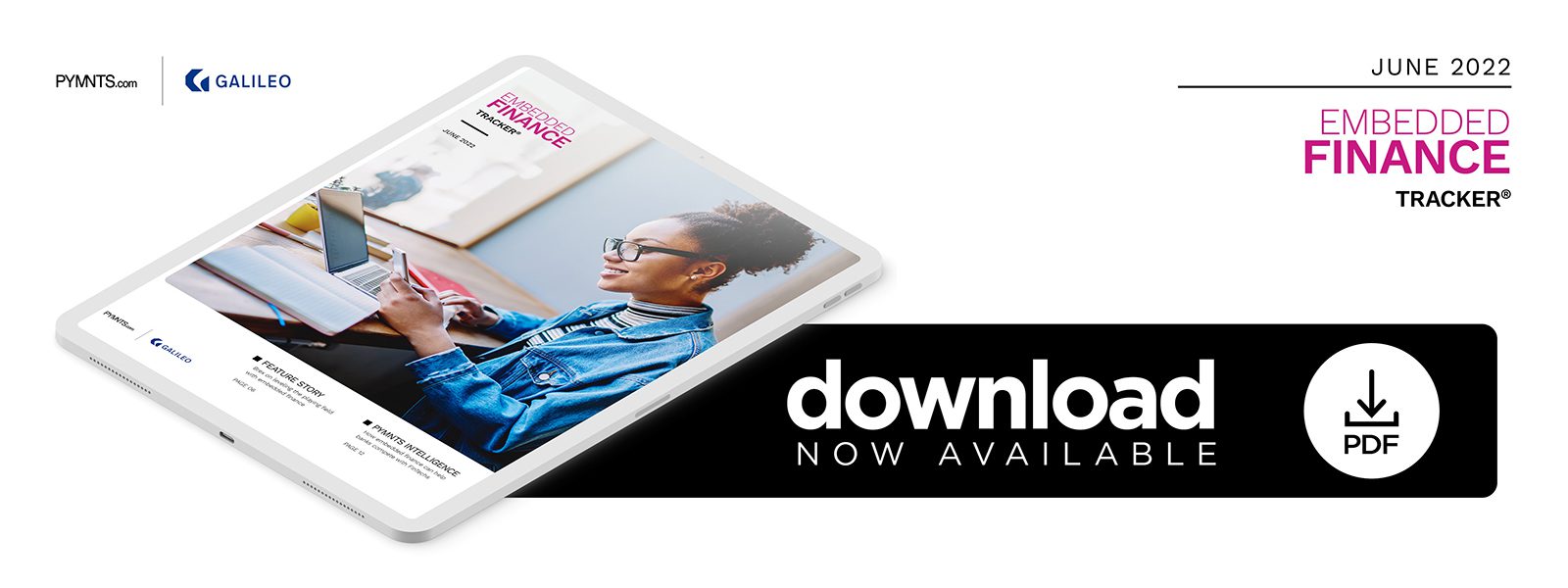Brex on Leveling the Playing Field With Embedded Finance

In this month’s “Embedded Finance Tracker,” Brex COO Michael Tannenbaum tells PYMNTS how traditional lenders are using embedded finance to give customers the digital experiences they want, but also to level the playing field with hard-charging FinTechs.
The pandemic has permanently altered how many consumers interact with their banks. Digital services are being used in record numbers in place of in-branch visits that became impractical during the onset of the pandemic. Many of these consumers continued to prefer their newly-adopted digital banking habits even as pandemic-related restrictions lifted, favoring the convenience of banking from home or on the go.
Some consumers are questioning the need for an in-branch banking experience at all, choosing instead to bank with digital-native options, such as FinTechs or challenger banks. This shift has put traditional financial institutions (FIs) on the back foot, according to Michael Tannenbaum, chief operating officer for spend management solutions company Brex.
“People are going digital-first,” Tannenbaum said. “They’re not really asking, ‘Does this financial provider or bank have a digital offering?’ They think of that bank or financial company as the digital offering [itself].”
Embedded finance solutions can help level this playing field for traditional banks, however. In a recent PYMNTS interview, Tannenbaum offered an inside look at how the advantages these systems provide can give FIs a competitive edge.
The Shift to Digital-First Banking
Consumers are flocking to digital banking in record numbers, in large part because many of the services traditionally offered in-branch were made available online. Even more complex operations, such as account opening or loan applications, can now be done remotely, kneecapping any incentive to visit a physical branch.
“What people liked about the branch is that you can get somebody to help you. If you go in with whatever request you have, they’ll address it,” said Tannenbaum. “But the [Banking-as-a-]Service model doesn’t require in-person [visits], so increasingly you’re seeing digital providers, whether they’re legacy or not legacy, investing [in remote services].”
Individuals’ expectations for digital banking have become so high, he said, that the separation between in-branch and digital banking has become obsolete. Digital offerings are the default, with in-branch services becoming a bonus that consumers can leverage if they prefer.
“The physical nature of financial services, whether it be branches or paper, has gone away,” Tannenbaum explained. “Even the word digital has become somewhat obsolete.”
This has driven consumers to flock to digital-first FinTechs, as they no longer need in-branch services of any kind. Banks are thus turning to embedded finance to get the tools they need to compete with these FinTechs.
How Embedded Finance Can Help FIs Compete
Embedded finance helps traditional FIs by leveling the playing field between them and digital-native competitors by offering them similar capabilities at a fraction of the price and effort, said Tannenbaum. Building offerings such as digital payments or buy now, pay later (BNPL) programs from the ground up is a massive undertaking, so outsourcing this work to a third party means a vastly reduced workload placed on existing IT staff and legacy systems.
“They can bring their offerings and user experiences to parity with modern systems,” he said. “Say you’re a legacy mortgage originator and you don’t have the resources to invest in that front end, so you partner with somebody else and you get that full experience for your customers.”
The story does not begin and end with this partnership, however. FIs need to be cognizant of their customers’ particular needs and cater the embedded finance experience to provide that, ensuring that the embedded finance provider is the right fit for their particular industry and systems.
“You have got to work backwards from the customer experience that you want, rather than the business goal,” Tannenbum said. “The business goal could be something simple like an embedded [registered investment advisor] or trading account for customers, but what does that actually mean? What do you want the customer experience to be like? What parts are managed by the embedded partner and what parts are managed by yourself?”
Entering the embedded finance experience with clear eyes and an end goal is the key to success, rather than simply to save money or keep up with other banks or FinTechs. As in all industries, the customer is king — and the embedded finance experience should reflect that.
